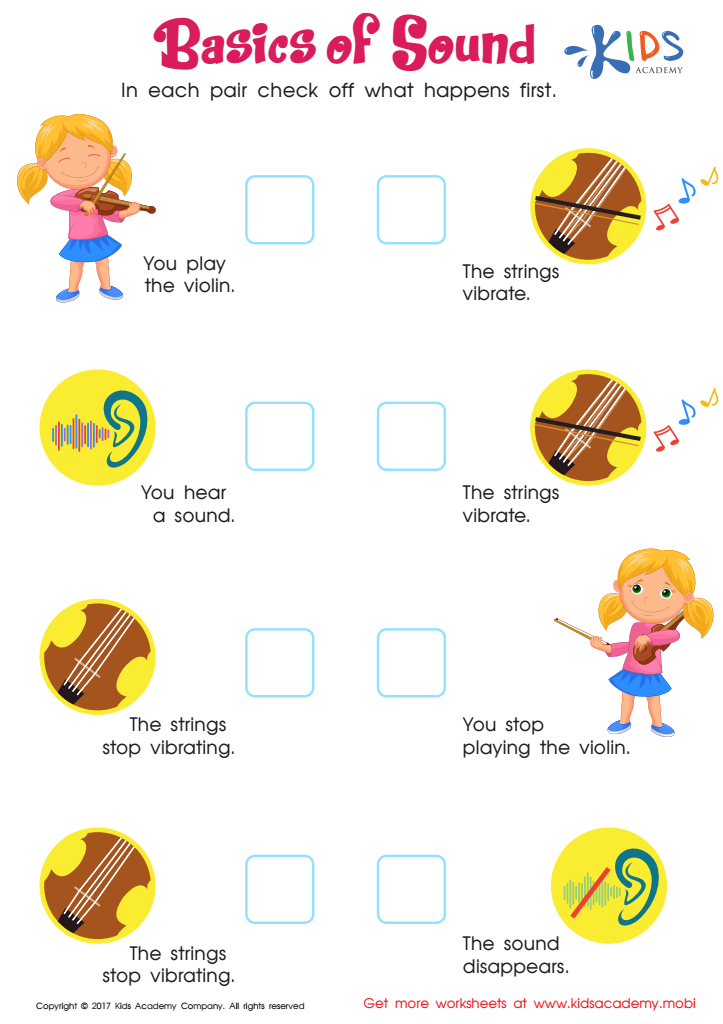Illustration comprehension Worksheets for Kids
1 filtered results
-
From - To


Basics Of Sound Worksheet
Question/Answer
Why is the Illustration comprehension skill important for Grade 1 students?
The illustration comprehension skill is crucial for Grade 1 students because it enhances their ability to decode visual information, aiding in the development of reading comprehension, creativity, and critical thinking. It also supports vocabulary growth and the understanding of story elements and themes, serving as a foundational skill for literacy and academic success.
What does the Illustration comprehension skill mean when it comes to Grade 1 Physical Science learning?
The Illustration Comprehension skill in Grade 1 Physical Science involves the ability of students to understand and interpret visual representations such as drawings, diagrams, and charts related to physical science concepts. It helps them grasp fundamental ideas about objects, materials, and simple physical phenomena by visually analyzing and making sense of the information presented in graphical forms.
What are some effective activities to train students’ Illustration comprehension skill when teaching them about Physical Science?
Effective activities include: 1. Labeling parts of diagrams. 2. Matching illustrations with corresponding scientific concepts. 3. Creating their own illustrations based on descriptions of physical science phenomena. 4. Analyzing and interpreting data from graphs and charts. 5. Conducting observational drawings during experiments to capture processes and results. 6.
 Assign to the classroom
Assign to the classroom












